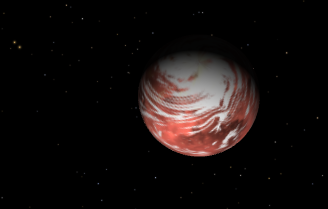TOI-715b: NASA Discovers Potential Life-Sustaining ‘Super-Earth’
American space agency NASA has discovered a “super-Earth” planet, dubbed TOI-715 b, that could potentially support life. It is located 137 light-years away and was found by NASA’s planet-hunting Transiting Exoplanet Survey Satellite (TESS) mission. The super-Earth is around one and a half times as wide as Earth and orbits a smaller, cooler red dwarf star. It completes a full orbit in just 19 days.
Characteristics of Planet TOI-715b
The planet TOI-715 b resides within the star’s “conservative habitable zone,” meaning liquid water could potentially exist on its surface given the right atmospheric conditions. While several factors must align for surface water, including a suitable atmosphere, the conservative habitable zone makes conditions ripe for further investigation. NASA notes the planet could be slightly larger than Earth and may be a “water world,” making its atmosphere more prominent.
Properties of Parent Star
The super-Earth orbits a red dwarf star, which is smaller and cooler than our Sun. Red dwarfs are known to host small, rocky worlds in very close orbits compared to planets around Sun-like stars. But due to cooler temperatures, these tight orbits can remain safely in the habitable zone. More transits also occur due to tight orbits, enabling better detection and study of planets.
Follow-up Plans to Study Viability
NASA plans further scrutiny of TOI-715 b by the James Webb Space Telescope, which will characterize the planet based on additional properties. Much depends on the planet’s mass, whether it has an atmosphere, and any water content. These factors impact both habitability and the ability to study its atmosphere from Earth-based telescopes if present.
Earth Like Planets
While Earth is the only known place harboring life, estimates of habitable zones and discoveries of thousands of exoplanets suggest there may be many more habitable places in the Universe. Based on Kepler data, there could be 40 billion Earth-sized planets in habitable zones of Milky Way stars, including 11 billion orbiting Sun-like stars. The nearest such potentially habitable exoplanet may be just 12 light-years away. As of 2024, more than 60 potentially habitable exoplanets have been confirmed, though more await discovery.
About Transiting Exoplanet Survey Satellite (TESS)
Transiting Exoplanet Survey Satellite (TESS) is a NASA mission designed to search for exoplanets or planets around other stars. The mission was launched in 2018 and has made significant progress so far. Its mission objective is to discover new planets that periodically block part of the light from their host stars, events called transits. TESS has identified over 5,000 candidate exoplanets, 173 of which have been confirmed. TESS has found a number of rare exoplanet discoveries earlie like TOI 700 d, a potentially habitable Earth-sized world; AU Mic b, a nearby Neptune-sized planet; and LTT 9779b, a planet slightly bigger than Neptune with two suns.
Month: Current Affairs - February, 2024
Category: Science & Technology Current Affairs







